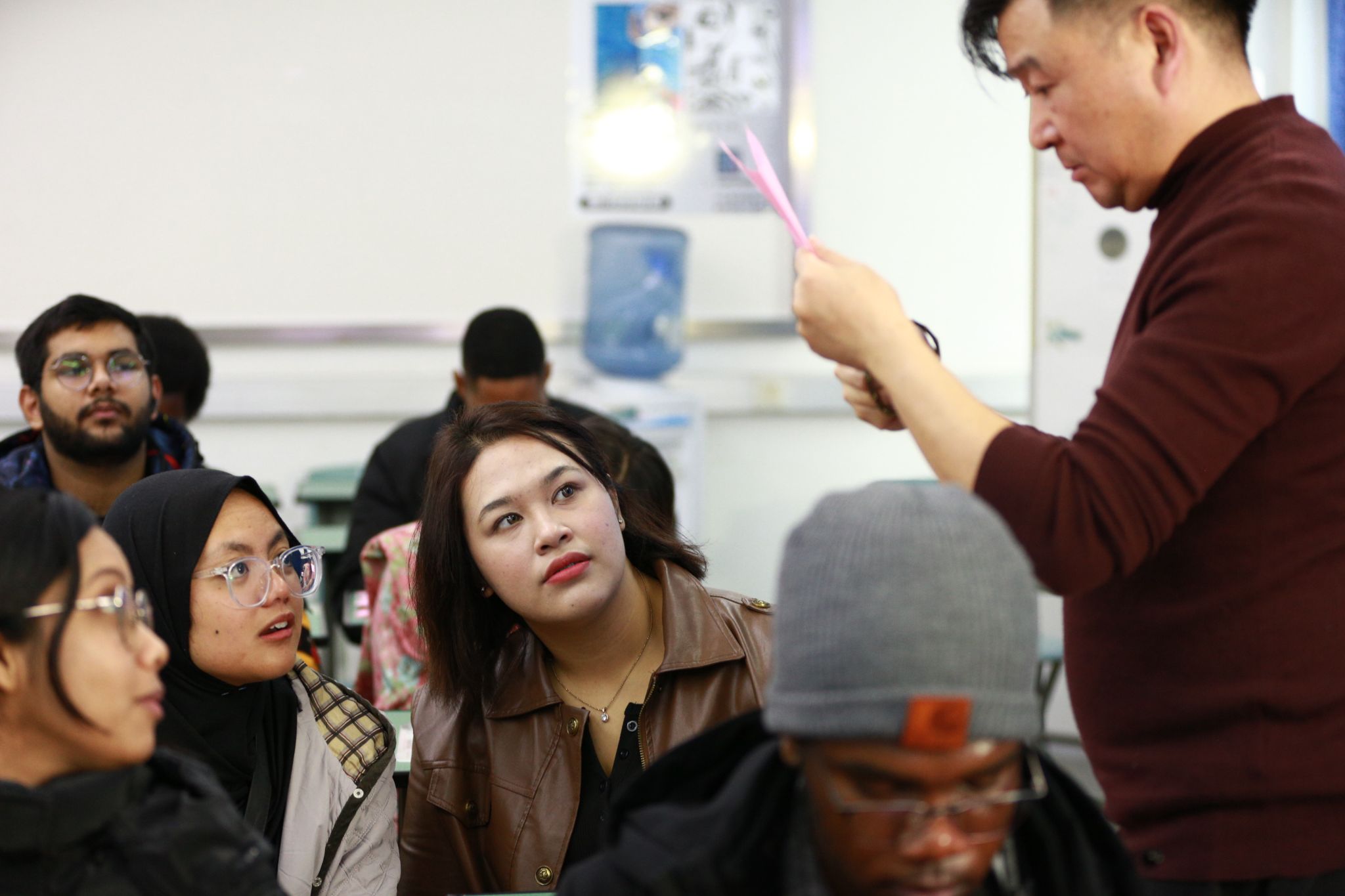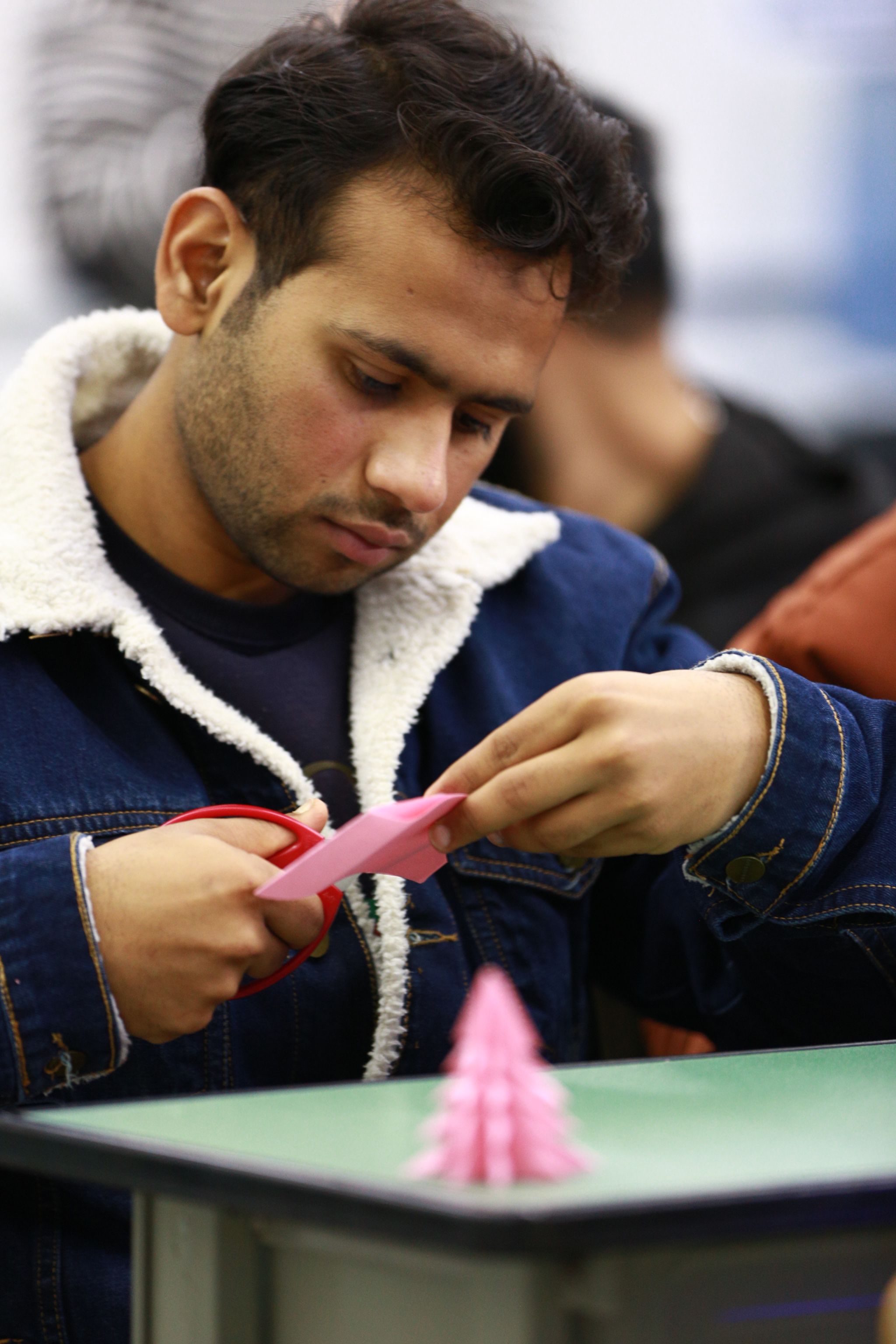Written by: Yang Chunyun, Photos by: Yang Chunyun
On November 25, 2024, from 9:30 AM to 12:30 PM, the “Chinese Classic Culture Practical Courses”, held weekly for international students at North Sichuan Medical College, was held in Room 1202 of the library building. This session’s theme was paper-cutting.
A unique feature of the “Chinese Classic Culture Practical Courses” at North Sichuan Medical College is that language instructors first teach language and culture before inviting external mentors to guide the students in hands-on practice.
The external mentor for this session was Mr. He Xiaoqiang, a representative inheritor of Sichuan Province’s intangible cultural heritage and a master of crafts and arts from Yilong County, Nanchong City. He started by teaching students how to use scissors through shapes symbolizing the sun (circle), the moon (crescent), and mountains (curves). He then guided them in cutting shapes such as gourds and butterflies, etc.

The students showed great interest, carefully following his instructions. After making a gourd shape representing “Fu” (happiness and blessing in Chinese), Mr. He encouraged them to design their own creations. Students used their creativity to design their own gourd, butterfly, and even cut out a panda or “their own home”.
Through learning and practicing paper-cutting, a traditional folk art, the students had a deeper experience of the beauty of Chinese culture and the wisdom of the Chinese people. In the final hour, they boldly attempted to create their own works. The activity did not end with the class; some students even asked for more scissors and colored paper, planning to create more pieces and bring them for a “cloud display” next time.
The goal of our “Chinese Classic Culture Practical Courses” is not only to provide international students with an in-depth experience of Chinese culture and language but also to teach them skills that are useful for their medical studies. Paper-cutting is a delicate craft that requires patience, carefulness, and focus, all of which are essential for their future clinical work, such as surgical suturing and using scissors.
